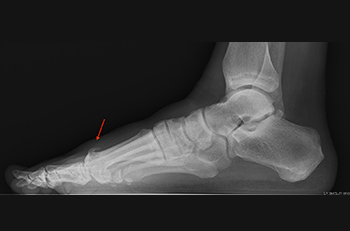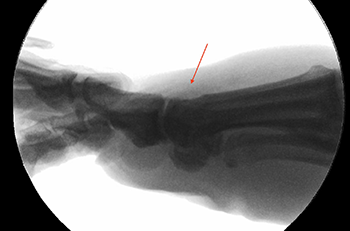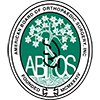What is big toe arthritis – hallux rigidus?
Hallux Rigidus means “stiff big toe” in Latin (hallux = big toe, rigidus = rigid, stiff).
Generally, the big toe becomes stiff as arthritis develops. Arthritis is a condition in which cartilage (the smooth, nearly frictionless surface lining our joints) wears away and becomes uneven or even absent. Ultimately, large bone spurs can form around the joint and the joint becomes swollen, painful, and stiff.
However, there is a spectrum of arthritis that can range from minimal symptoms all the way to the pain of bone grinding on bone.
What causes big toe arthritis (hallux rigidus)?
Most of the time, arthritis develops from the general “wear-and-tear” of the cartilage with time and age.
However, fractures and other injuries around the toe can cause arthritis to develop earlier than we hope as well.
What are common symptoms associated with big toe arthritis (hallux rigidus)?
Early signs of big toe arthritis can include: swelling, stiffness and pain. Notably, the pain often starts off only bothering patients when they have the big toe bent up or flexed down (e.g. going up and down stairs, pushing off of the big toe when running).
In more advanced cases of big toe arthritis, there is minimal-to-no motion through the big toe joint and pain can be more constant.
What are non-surgical treatment strategies?
In general, non-surgical treatment options should be tried prior to considering surgeries. Dr. Yi is happy to discuss which treatment options might be most appropriate for you.
Some non-surgical treatment strategies include: show modifications, shoe inserts (such as a carbon fiber insert), activity modification, medications, or injections.
What are surgical treatment strategies?
There are several surgical treatment strategies. These are generally reserved for a situation in which patients have not had satisfactory results with non-surgical treatment.
Some common surgical treatment options include:
- Cheilectomy procedure: involves shaving down bone spurs off of the top of the big toe joint. This procedure is reserved for situations in which the arthritis is not advanced and most of the cartilage is still preserved. The cheilectomy procedure is highly successful for the appropriate patient.
- You also could be a candidate for a minimally invasive cheilectomy procedure in which the bone spur is removed through a small incision (roughly 5 mm – only requiring a single stitch).
- The benefits of minimally invasive surgery include: faster recovery, immediate weight bearing after surgery (in a postoperative stiff shoe), less pain, much smaller incision/scar, and the same excellent outcome

 The above x-ray on the left shows a bone spur (red arrow) that was causing a patient to have a stiff and painful big toe. The above x-ray on the right shows the same patient’s big toe after the bone spur was removed using a minimally invasive technique that involved a single skin incision (that was only a few millimeters long and required only a single stitch). This patient was able to walk in a stiff postoperative shoe starting the day after surgery.
The above x-ray on the left shows a bone spur (red arrow) that was causing a patient to have a stiff and painful big toe. The above x-ray on the right shows the same patient’s big toe after the bone spur was removed using a minimally invasive technique that involved a single skin incision (that was only a few millimeters long and required only a single stitch). This patient was able to walk in a stiff postoperative shoe starting the day after surgery.
- Cartiva ®: this procedure involves a partial joint replacement and insertion of an implant (made of material similar to that of contact lenses) that replaces an area of missing cartilage. This can be a solution for some specific patients.
- Fusion procedure: when the arthritis becomes advanced and no longer responds well to non-surgical treatment, the fusion procedure is a highly successful option. This procedure involves having the bones of your big toe joint fuse or bond together as one. The joint is removed with the idea of eliminating the pain as well. This also means that there will be no motion through the big toe joint. However, patients that have this procedure generally do not have much remaining motion of the big toe to begin with.
What is the recovery timeline after surgical treatment?
After a minimally invasive cheilectomy procedure with Dr. Yi, you can expect to put weight down on your foot as you can tolerate (in a stiff-soled postoperative shoe) immediately after surgery. Don’t expect to be starting full activities. However, you can expect to be able to walk around your house for day-to-day activities. No high impact activities until about the 6 week mark after surgery.
After a Cartiva ® procedure: you will be putting weight down through your heel only for about 2 weeks and gently start easing into full weightbearing thereafter.
After a fusion procedure: you will be putting weight down through your heel only for about 4-6 weeks.








